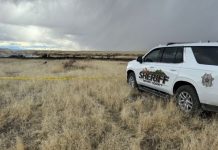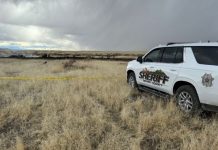WASHINGTON, August 11 (UPI) — The National Transportation Safety Board cited “driver fatigue” on the part of a Wal-Mart truck as the probable cause of the fatal multi-vehicle crash that severely injured comedian Tracy Morgan.
The driver had been awake for more than 28 hours at the time of the accident, NTSB said Tuesday.
The severity of the injuries of the passengers in the limousine, the NTSB reported, was also due to their failure to wear seatbelts and to properly adjust the headrests in the limo.
“…This is not a matter of blame. It’s a matter of prevention,” said Christopher Hart, board chairman.
Along with determining a cause of the accident, the NTSB recommended increased measures aimed at preventing truck driver fatigue, educating passengers of commercial vehicles about the importance of seatbelts, and looking closer at the training and standards of emergency responders.
Tracy Morgan, who suffered broken ribs, a broken nose, head trauma and a broken leg in the crash on the New Jersey Turnpike, is best known for starring in “Saturday Night Live” and “30 Rock” His friend, fellow comedian James McNair, was killed in the June 7, 2014 accident.
The crash occurred when Wal-Mart truck driver Kevin Roper, 35, of Jonesboro, Ga., failed to slow down in slowing traffic while driving in an active work zone. The driver’s failure to cut his speed to the posted 45 mph limit resulted in a rear-ending of the limo van that carried Morgan and six other passengers. The accident caused a chain reaction that involved six cars.
Wal-Mart said it has high standards for its drivers and provides them with yearly safety training. Since the 2014 accident, the company has ramped up training courses for its drivers.
“Following the New Jersey Turnpike accident, our transportation team made some enhancements to improve our safety program,” Randy Hargrove, Wal-Mart spokesman, said in a phone interview. “This includes additional training and education for our drivers, reinforcing their responsibility to make sure they are fit to drive whenever they get into one of our trucks. We are in the process of implementing a comprehensive fatigue management plan that takes in to account driver commutes.”
Although driver fatigue was discussed at length during the NTSB meeting, seat belt use was seen as being just as important.
“…When we ride in any vehicle equipped with restraint systems, whether as driver or passenger, we should buckle up, just as we would in our own cars.” Hart said in a closing statement.







